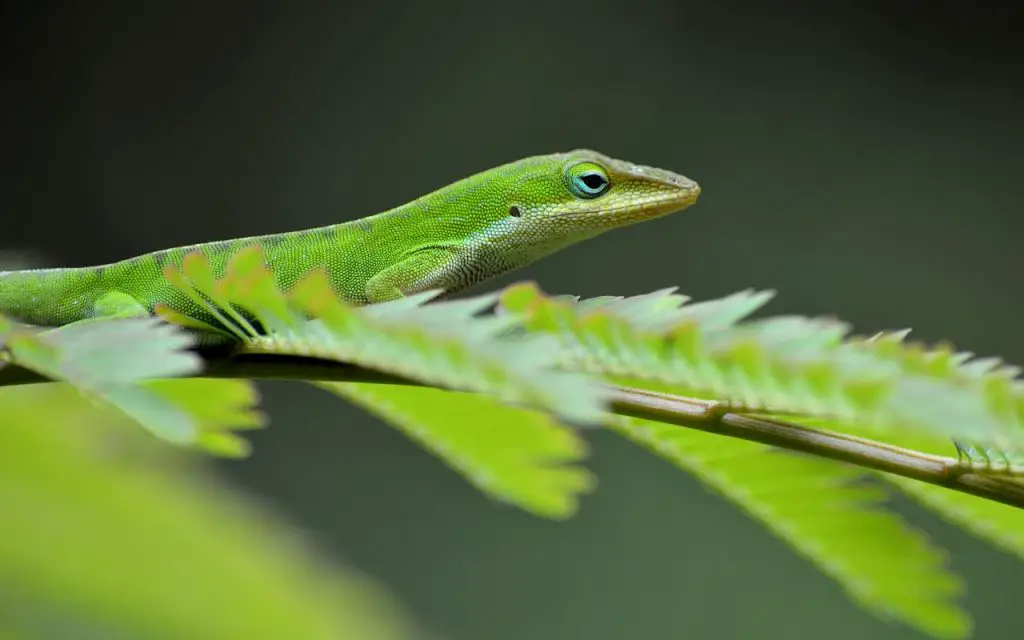Are Green Anoles endangered? Currently they are not considered endangered or even threatened, but the fact they are declining in numbers is very clear…
Last updated on February 1st, 2023 at 09:22 am
Green anoles (Anolis carolinensis) are not considered to be endangered. They are found in a variety of habitats, including forests, wetlands, and urban areas. They are also commonly kept as pets. However, habitat loss and the introduction of non-native species, such as the Argentine black and white Tegu, may impact their populations.
Are Green Anoles rare?
Green anoles (Anolis carolinensis) are not considered to be a rare species. However, their populations may be affected by changing climate and the introduction of non-native species.
While not considered rare, it is important to note that their populations and distribution may change in the future, and monitoring is necessary. Most amateur and qualified herpetologists alike agree that their numbers are in decline.
Are anoles endangered?
While some species of anoles are considered to be endangered, the majority are not. Many species of anoles are considered to be common and have stable populations.
However, some species of anoles, particularly those found on small islands or in fragmented habitats, are considered to be endangered or critically endangered.
Are green anoles endangered in Florida?
Green anoles (Anolis carolinensis) are not considered to be endangered in Florida. They are common in the state – at the moment.
The key thing to remember is that they aren”t as common in southern Florida as they used to be, though. Since the Brown Anole (Anolis sagrei) became invasive to southern Florida in the early 1900s, it has slowly spread north.
What any herper or zoologist who remembers going to Florida just twenty years ago (I went for the first time when I was twelve) will tell you is that everywhere where the Brown Anoles have become more common, Green Anoles have become less numerous.
Last time I was to south Florida was in 2019, and I found one single Green Anole, but more Brown Anoles than I could count. Twenty years ago, there is no way that would have happened!
It seems that Brown Anoles have pushed them out of their terrestrial habitats and this has taken a toll on their population as a whole. Then again, you can’t place all the blame on Brown Anoles.
Green Anoles have also been harmed by habitat destruction, and relentless collection for the pet trade.
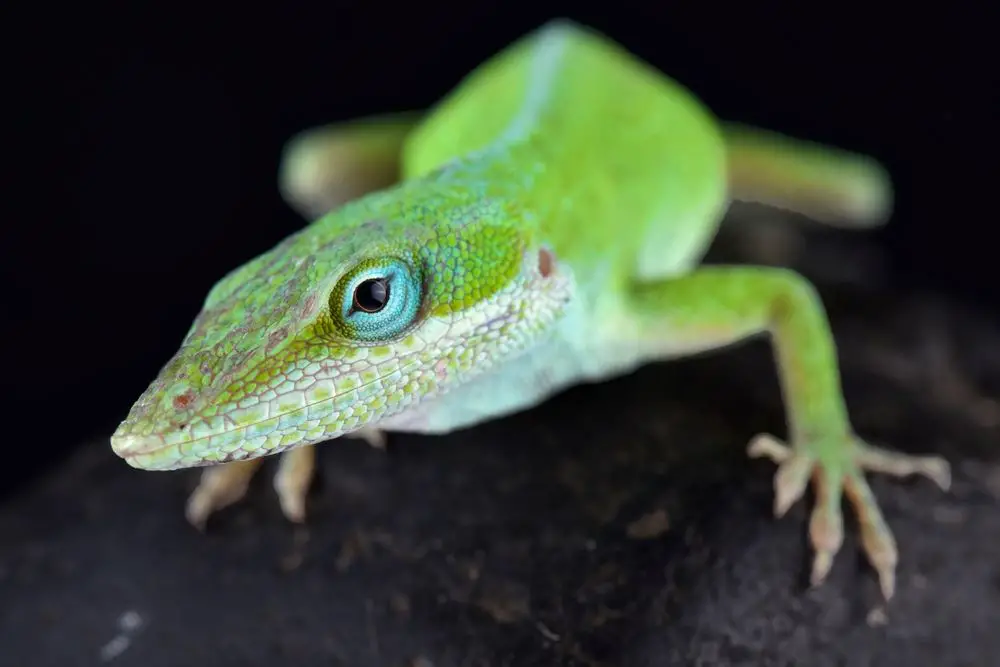
Are green anole lizards rare?
Green anole lizards are not considered to be a rare species. They are also widely kept as pets. In some parts of their distribution, it is true that they are becoming scarce, but at this point they are not legally recognised as endangered or even vulnerable.
Green anoles are known for their ability to change color, which they use for camouflage and communication. You can check out their key characteristics and facts here.
Do brown anoles eat green anoles?
Brown anoles (Anolis sagrei) are known to eat other lizard species, including other anoles. It is possible that they may eat baby green anoles (Anolis carolinensis) if they come across them in the wild. Likewise, more aggressive Green Anoles probably eat Brown Anoles too.
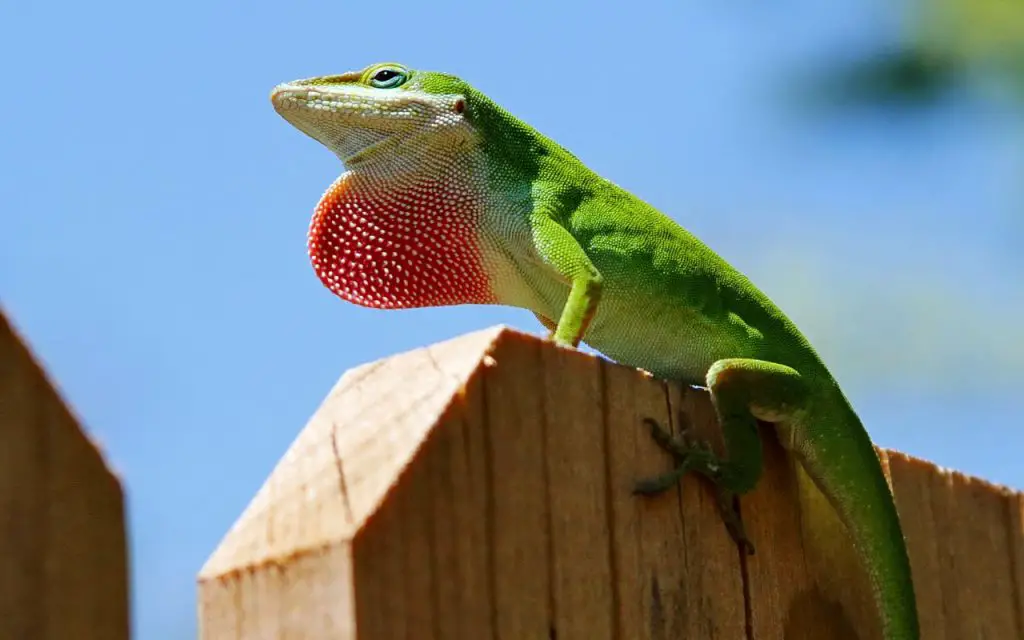
Are brown anoles invasive?
Brown anoles (Anolis sagrei) are considered to be an invasive species in parts of the US. Brown anoles are considered invasive because they can establish themselves in new areas and outcompete native species for resources such as food, sunlight, and territory.
They are known to be aggressive and highly territorial, and they have been observed to displace native anoles in Florida, where they were first introduced.
Are green anoles invasive?
Green anoles (Anolis carolinensis) are not considered invasive in most of their native range, which is the southeastern United States.
They have been known to adapt to different environments and have a wide range of diets that allow them to survive in different conditions. As we’ve seen in Florida, however, they aren’t great in competing with other anole species.
So, in theory, they could become invasive if they were introduced somewhere there are no other anoles to compete with.
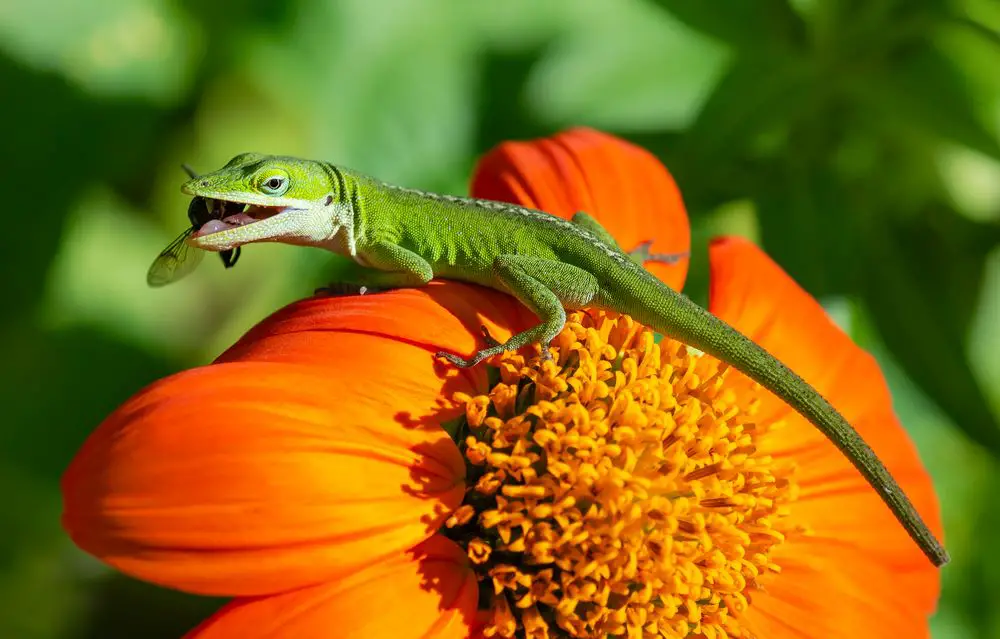
Green anole texas
Green anoles can be found in Texas. They are considered to be a common species in the state. Generally speaking, you can find Anoles as far west as San Antonio, and a bit further north too. They are absent from the arid western regions, though.
In Texas, green anoles populations may be impacted by habitat loss and degradation, as well as the introduction of non-native species. Urbanization and the destruction of natural habitats can have an impact on their populations.
Can I keep a wild green anole?
It is generally not recommended to keep wild-caught Green Anoles as pets. Wild animals may carry diseases or parasites that can be transmitted to humans or other pets.
Additionally, keeping wild anoles can have a negative impact on the wild population and may disrupt the ecosystem. It is important to consider the well-being of the animal and the environment before taking one from the wild.
It’s important to check the laws and regulations in your area before keeping any wild animal as a pet.

Green anole Florida
The green anole, known for its color-changing ability, is the only species of anole that is originally from Florida. Their color can vary from green, green and brown, or brown. The dewlap, which is a flap of skin under the chin, can also vary in color from pink, yellow, red, orange, white, blue, or purple.
Are green anoles native to Florida?
The green anole, which is the only native anole species in Florida, is known for its ability to change color from green to brown. However, it’s important to note that, despite this ability, green anoles are not true chameleons.
They are a different species of lizards. Additionally, it’s worth noting that although green anoles can change color to brown, brown anoles cannot change color to green; they remain brown.
The only native anole species in Florida is the green anole (Anolis carolinensis), which is sometimes mistakenly referred to as a “chameleon” because it can change color. True chameleons, which are actually not native to Florida, are members of an entirely different group of lizards than the aforementioned anoles.
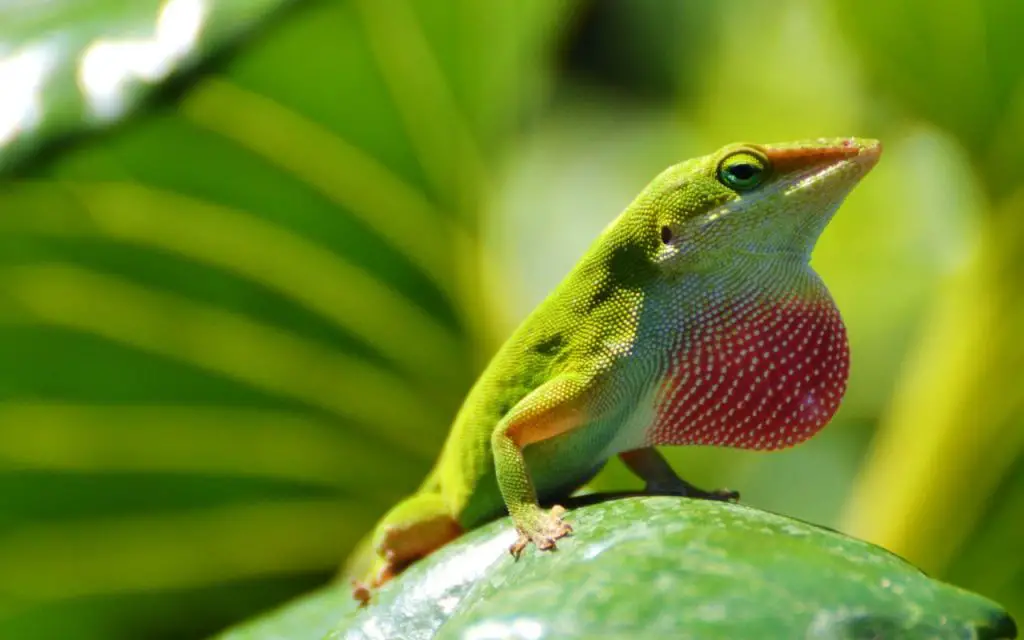
Green anole for sale
Green anoles are widely kept as pets and are readily available for purchase from pet stores and reptile breeders. When looking for a green anole for sale, it is important to find a reputable source that can provide you with a healthy and well-cared-for animal. Some things to consider when buying a green anole:
- Look for a healthy animal with clear eyes, clear skin, and a full body.
- Ensure the enclosure is clean and appropriate for the animal’s size and needs.
- Ask the seller about the animal’s diet and care requirements, and ensure that you can provide for the animal’s needs before purchasing it.
- It’s important to research the species, their life expectancy, and their specific needs before buying one.
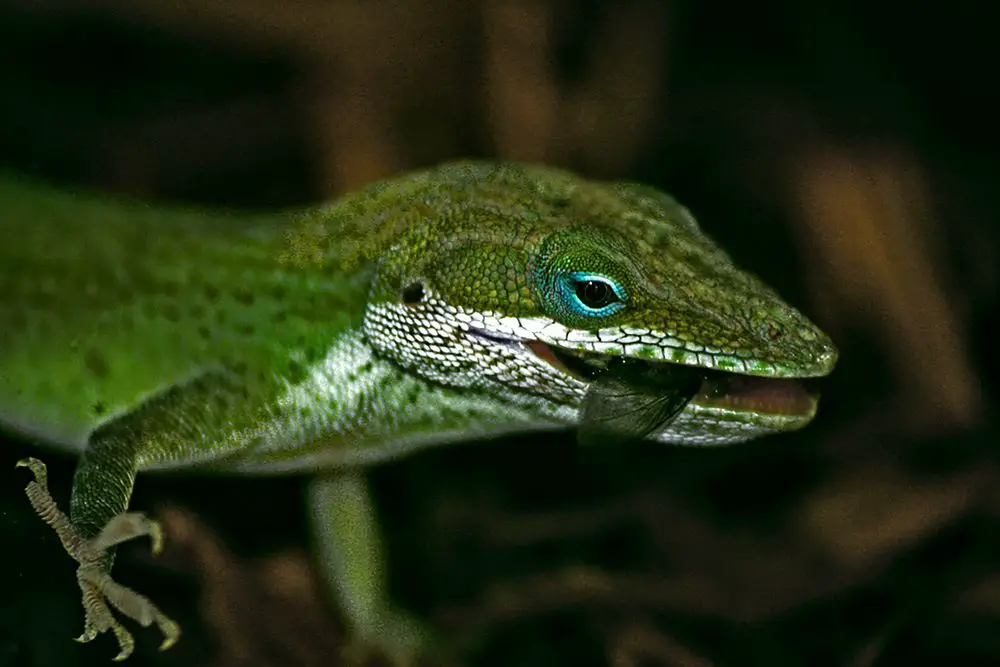
FAQ relating to whether green anoles are endangered
How smart is a green anole?
Green anoles (Anolis carolinensis) are considered to be relatively intelligent lizards. They have a relatively complex nervous system and can learn and adapt to their environment.
They can learn from experience; for example, they can learn to associate certain colors with food, and they are able to remember the location of food sources for some time. They also have a good memory for the location of perches and other familiar objects in their environment.
Do anole lizards have feelings?
Anole lizards, like other reptiles, have a different physiology than mammals and birds. Therefore, their emotional experiences are different from those of mammals and birds. They have a more primitive nervous system, and it’s unlikely that they experience complex emotions like love, joy, or guilt.
However, they possess basic emotions, such as fear, aggression, and pleasure, which are necessary for survival and reproduction. Reptiles are equipped with various behaviors that help them respond to different situations, such as finding food, avoiding predators, and reproducing.
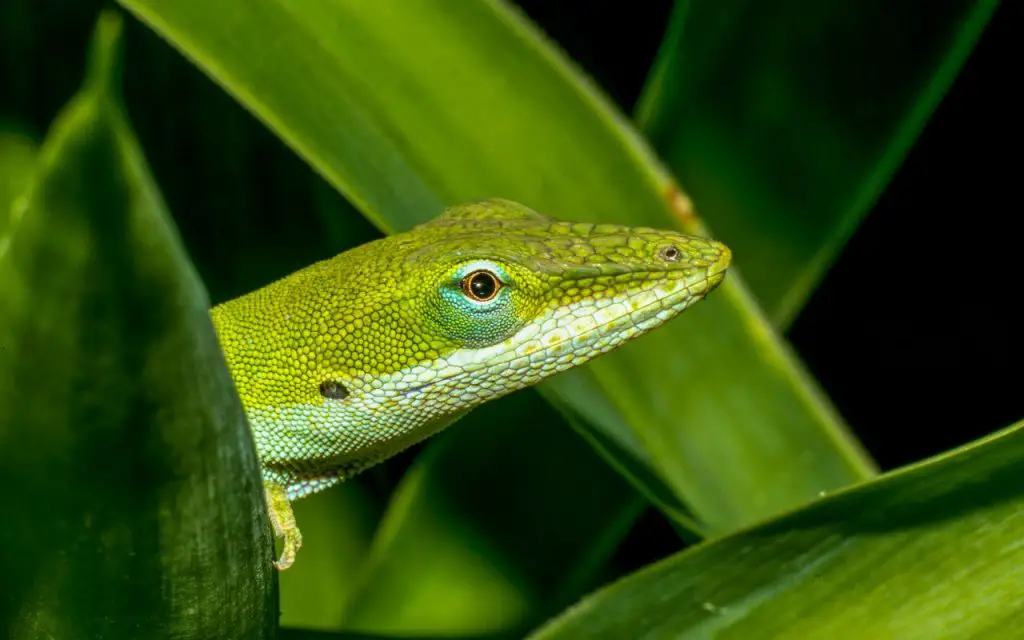
How do you make green anoles happy?
Green anoles (Anolis carolinensis) are relatively hardy lizards and can be easy to care for if their basic needs are met. To make sure your green anoles are happy and healthy, you should:
- Provide them with a suitable enclosure that is appropriate for their size and needs. The enclosure should be large enough for them to move freely, with perches, climbing branches, and basking spots.
- Maintain appropriate temperature and lighting. Green anoles need a basking spot with temperatures between 80-90 F and a cooler area with temperatures between 70-80 F.
- They need UVB light to help them produce vitamin D3, which is necessary for calcium absorption.
- Green anoles are insectivorous and should be offered a variety of live insects, such as crickets, mealworms, and waxworms. You can also offer them some fruits and vegetables.
- Provide them with a hiding spot. Green anoles need a hiding spot to feel secure and to rest.
What is the lifespan of an anole lizard?
The lifespan of an anole lizard can vary depending on the species and the conditions in which they are kept. In general, anoles are considered to be relatively short-lived lizards.
The green anole (Anolis carolinensis), which is a common pet species, has a lifespan of around 3-5 years in captivity and the wild. However, in captivity they can occasionally live to 8 years old if given excellent care.
The lifespan of other anole species can vary. Some species may live longer or shorter lives depending on the specific conditions of their environment. For example, the Knight anole (Anolis equestris) can live up to 10 years in captivity but have a shorter lifespan in the wild.
Key Takeaways
- Green anoles are not considered to be at risk of extinction. They are also popular as pets.
- Green Anoles are native species to Florida. Not to be mistaken with chameleons.
- Brown anoles feed mostly on insects and other invertebrates. However, they will also eat vegetation and small lizards, including their own species and the green anoles native to Florida.
- Anole lizards possess basic emotions, such as fear, aggression, and pleasure, which are necessary for survival and reproduction.
- Anoles live for 3 to 10 years, depending on the species.
- It is not recommended to keep anoles as pets.

